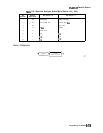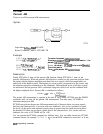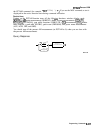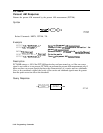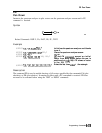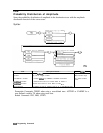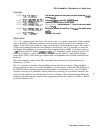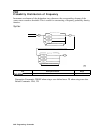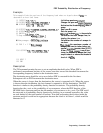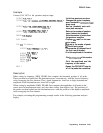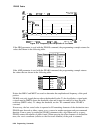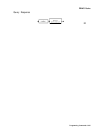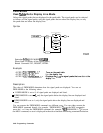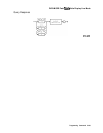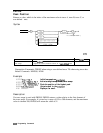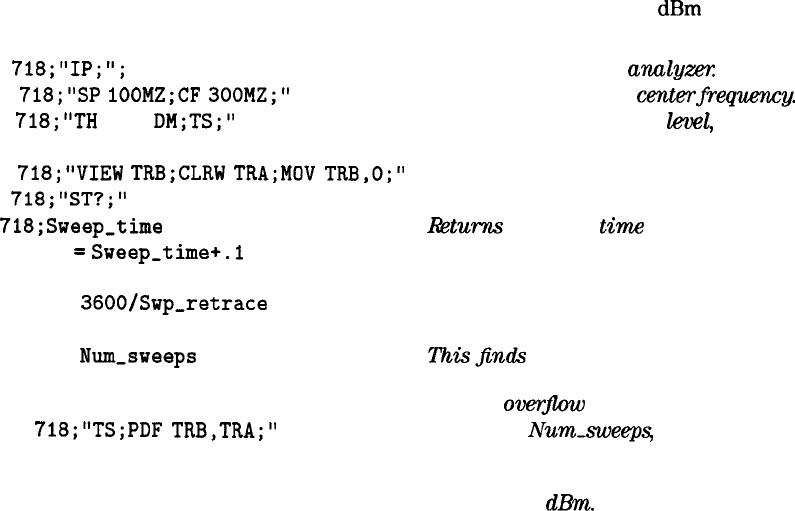
Example
PDF Probability Distribution of Frequency
This example finds the portions of the frequency band where no signals above
-50
dBm
are
observedin an hour time frame.
10
OUTPUT
718;"IP;";
Initializes spectrum
anal~.z.ex
20 OUTPUT
718;"SP
1OOMZ;CF
300MZ;”
Changes the span and
centerfrequency
30
OUTPUT
718;"TH
-50
DM;TS;"
Activates the threshold
level,
take a
sweep.
40 OUTPUT
718;"VIEW
TRB;CLRW
TRA;MOV
TRB,O;"
50
OUTPUT
718*"ST'*"
60
ENTER
718;Sweepitime
70 Sup-retrace
=
Sweep-time+.1
Sets trace B to zeros.
Gets the sweep
time.
I&turns
the sweep
time to
the controller:
Calculates the total sweep time, in-
cluding the retrace
time.
Calculates the number of sweeps in
one hour:
80
Num,sweeps
=
3600/Swp,retrace
90
FOR I = 1 TO
Num-sweeps
100 OUTPUT
718;"TS;PDF
TRB,TRA;"
Thisjino!s the maximum number of
sweeps that can be taken before nu-
merical
ove@ow
(greater than 32,767.)
When I =
Num-sweeps,
trace B con-
tains the number of sweep that had
amplitudes at or above the threshold
level of -50
dBm.
110 NEXT I
120 END
Description
The TH command permits the user to set an amplitude threshold value. When PDF is
performed, measurement buckets of the source trace that exceed the threshold increment the
corresponding frequency bucket in the destination trace.
The destination trace should be set to zeros before PDF is executed for the first time.
Subsequent calls to PDF increment the destination trace.
When the source is longer than the destination, the source is truncated to fit. When the source
is shorter than the destination, the last element is repeated to fill the destination. The PDF
function is similar to the probability density function in statistics. The probability density
function has the y-axis as the probability of an occurrence, where the PDF function of the
HP 8590 Series spectrum analyzer has the number of occurrences as its y-axis. The PDF could
be converted to a probability density function by dividing, in an external controller, the value
on each bucket by the total number of buckets. Note that performing the division inside the
spectrum analyzer would not be appropriate because the result is less than 1, which would be
truncated to 0.
Programming Commands 5.423



